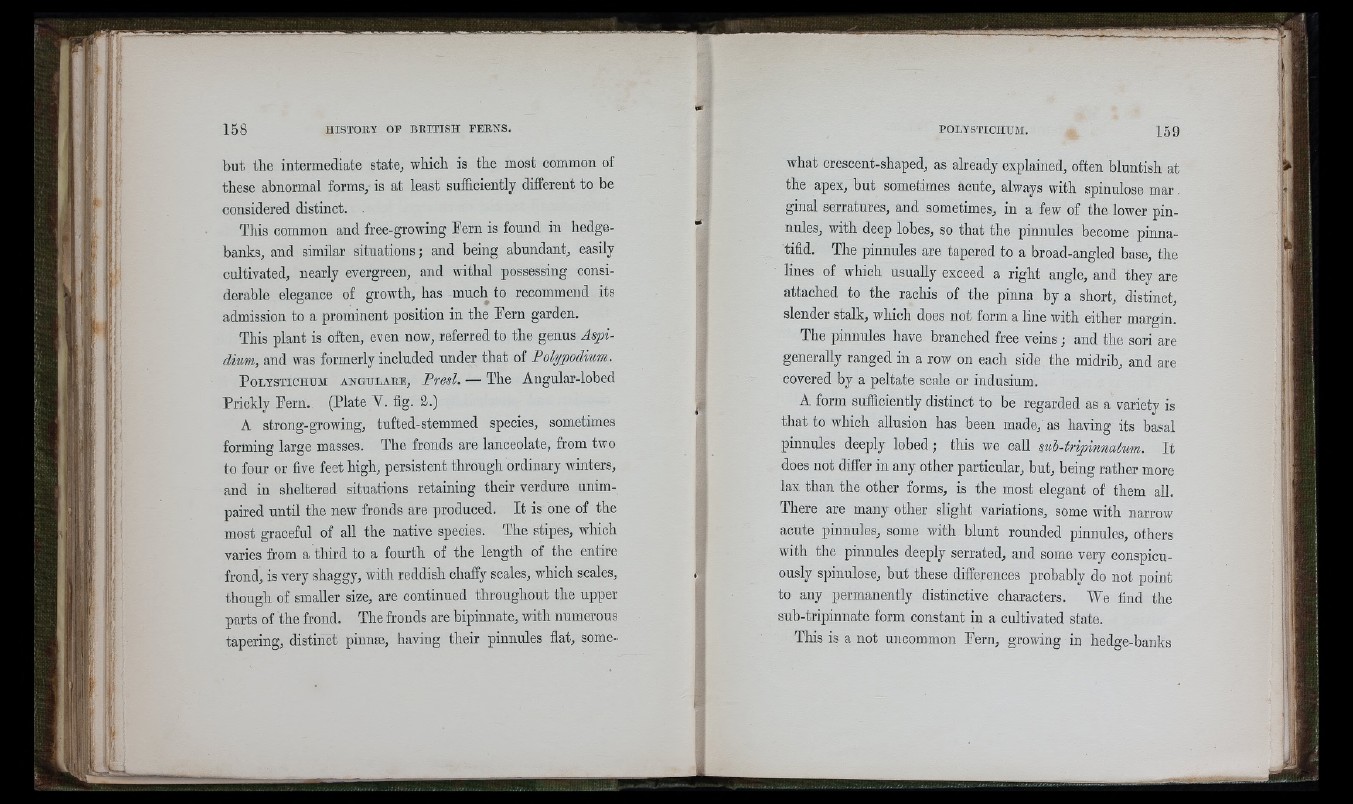
but the intermediate state, which is the most common of
these abnormal forms, is at least sufficiently different to be
considered distinct. .
This common and free-growing Pern is found in hedge-
banks, and similar situations; and being abundant, easily
cultivated, nearly evergreen, and withal possessing considerable
elegance of growth, has much to recommend its
admission to a prominent position in the Pern garden.
This plant is often, even now, referred to the genus .
dium, and was formerly included under that of .
P olystichum a n g u l a r e , Presl. — The Angular-lohed
Prickly Pern. (Plate Y. fig. 2.)
A strong-growing, tufted-stemmed species, sometimes
forming large masses. The fronds are lanceolate, from two
to four or five feet high, persistent through ordinary winters,
and in sheltered situations retaining their verdure unimpaired
until the new fronds are produced. It is one of the
most graceful of all the native species. The stipes, which
varies from a third to a fourth of the length of the entire
frond, is very shaggy, with reddish chaffy scales, which scales,
though of smaller size, are continued throughout the upper
parts of the frond. The fronds are bipinnate, with numerous
tapering, distinct pinnæ, having their pinnules flat, somewhat
crescent-shaped, as already explained, often bluntish at
the apex, but sometimes acute, always with spinulose mar.
ginal serratures, and sometimes, in a few of the lower pinnules,
with deep lobes, so that the pinnules become pinnatifid.
The pinnules are tapered to a broad-angled base, the
lines of which usually exceed a right angle, and they are
attached to the rachis of the pinna by a short, distinct,
slender stalk, which does not form a line with either margin.
The pinnules have branched free veins; and the sori are
generally ranged in a row on each side the midrib, and are
covered by a peltate scale or indusium.
A form sufficiently distinct to be regarded as a variety is
that to which allusion has been made, as having its basal
pinnules deeply lobed; this we call sub-tripimalum. It
does not differ in any other particular, but, being rather more
lax than the other forms, is the most elegant of them all.
There are many other slight variations, some with narrow
acute pinnules, some with blunt rounded pinnules, others
with the pinnules deeply serrated, and some very conspicuously
spinulose, but these differences probably do not point
to any permanently distinctive characters. We find the
snh-tripinnate form constant in a cultivated state.
This is a not uncommon Eern, growing in hedge-banks